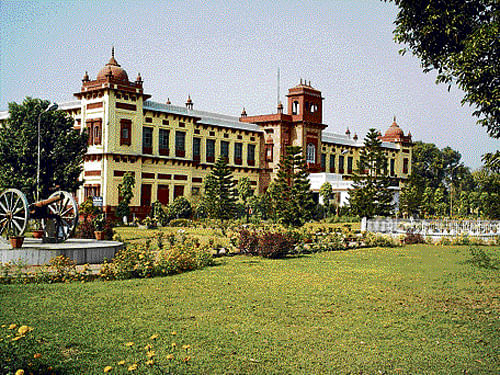
The Europalia Arts’ Festival in Belgium has got a Bihar touch too. Seven out of 250 works of art on display at the Brussels’ Centre for Fine Arts exhibition are from the Patna Museum. The festival, which was inaugurated by President Pranab Mukherjee in October, is slated to continue till January 5.
Artefacts from private collectors and 50 museums have been put on display at the exhibition which decodes different perceptions, traditions and beliefs linked to India. “The Body of Indian Art” is the theme of the exhibition, which has been organised to help the public in Belgium understand the key elements that have shaped India over the years.
Prior to this festival, a team of Indian Council for Cultural Relations (ICCR), New Delhi, visited Patna and selected 10 artefacts from the museum. Eventually, seven of them were sent to Brussels. The artefacts are Mithuna figure (first century BC, stone), Tara (10th century AD, bronze), Gargoyale (Makar, 12th century AD, blackstone), Serpent (Naga, second century BC, terracotta), Mother and child ( third century BC, terracotta), Saptmatrika ( first century AD, terracotta), Female figurine (third century BC, Bulandibagh, terracotta).
The remaining three artefacts were not sent owing to their delicate nature, besides the mandarins were not prepared to take risk of damaging any artefact.
The museum is, in fact, one of the best in the country and provides an insight into the history, culture and art tradition of the land. The museum has thousands of exhibits, including pre and proto objects, stone sculpture, bronze items, terracotta, miniature paintings, Thanka paintings, coins and other miscellaneous art objects.
Though the museum was formally inaugurated in on March 6, 1929, the need for it was first discussed in 1912, when Bihar was separated from Bengal. At the first meeting of the Bihar and Orissa Research Society (Bihar and Orissa were one state till 1935) held under the presidentship of the then Lieutenant Governor Sir Charles S Bailey on January 20, 1915, veteran scholar Dr Sachchidanand Sinha moved a resolution that a provincial museum and a library be established in the state.
Eventually, the then state government appointed a committee on July 26, 1915, to work out a scheme for the establishment of a museum. Initially, the collected antiquities were placed at the commissioner’s bungalow (which is now AN Sinha Institute). In 1917, the antiquities were shifted to a few rooms of the north wing of the Patna High Court building where the then Lieutenant Governor Sir Edward Gait formally established the museum in April 1917.
With the increasing number of exhibits, the museum had to be expanded as the Patna High Court wing could not accommodate them.
Later, in 1925, a huge tract of land was selected on Patna-Gaya Road (which is now called Buddha Marg). The two-storey building, designed by Rai Bahadur Bishnu Swarup was completed by the end of December 1928 and the office of the museum shifted there on February 1, 1929. The museum was formally inaugurated and thrown open to public by the then Governor of Bihar and Orissa, Sir Hugh Lansdowne Stephenson, on March 6, 1929.
Built in Indo-Saracenic style, the majestic building is one of the finest examples of Mughal architecture. The most remarkable feature is the domes over the four corners and the windows in style of “jharokas”. The museum has the holy relic casket of Lord Buddha containing his ashes and other related materials found during the excavation of a stupa belonging to 6th century BC at Vaishali. Besides, it has pre-historic objects which include paleoliths, microliths, neoliths discovered from different parts of Bihar and from foreign countries as well. The paleolithic tools from Bariar (in Madhya Pradesh), Lalitpur (UP) and Attirampakkam (Tamil Nadu) are some rare artefacts.
The museum possesses one of the biggest collections of copper hoards discovered from various parts of the country. They represent the casting technique and high metallurgy skill. The museum also preserves a few of the important finds from the Harappan sites, which include terracotta figurines, potteries, copper and bronze objects. Another prized possession is the famous female “chauri bearer” figure of the Mauryan period (3rd century BC). Discovered at Didarganj, the magnificent statue is also called Didarganj Yakshini. It is made up of chunar sandstone and is one of the earliest examples of Mauryan art.
The museum also preserves a number of sculptures of the Pala-Sena school of art from 8th to 12th century AD. It possesses the best collection of bronze images, better known as astadhatu images in India. These bronzes were discovered from Chausa (Buxar), Kurkihar (Gaya), Nalanda, Belwa (Saran), Nagapattinam (Tamil Nadu).
The museum is particularly rich in coins, neolithic artefacts, paintings, manuscripts, various rocks and minerals, fossil-tree, cannons and glass objects. The Persian manuscripts of Shahnama, fully illustrated and in two volumes, also finds a pride of place here. No wonder, the museum is the cultural pride of the State.